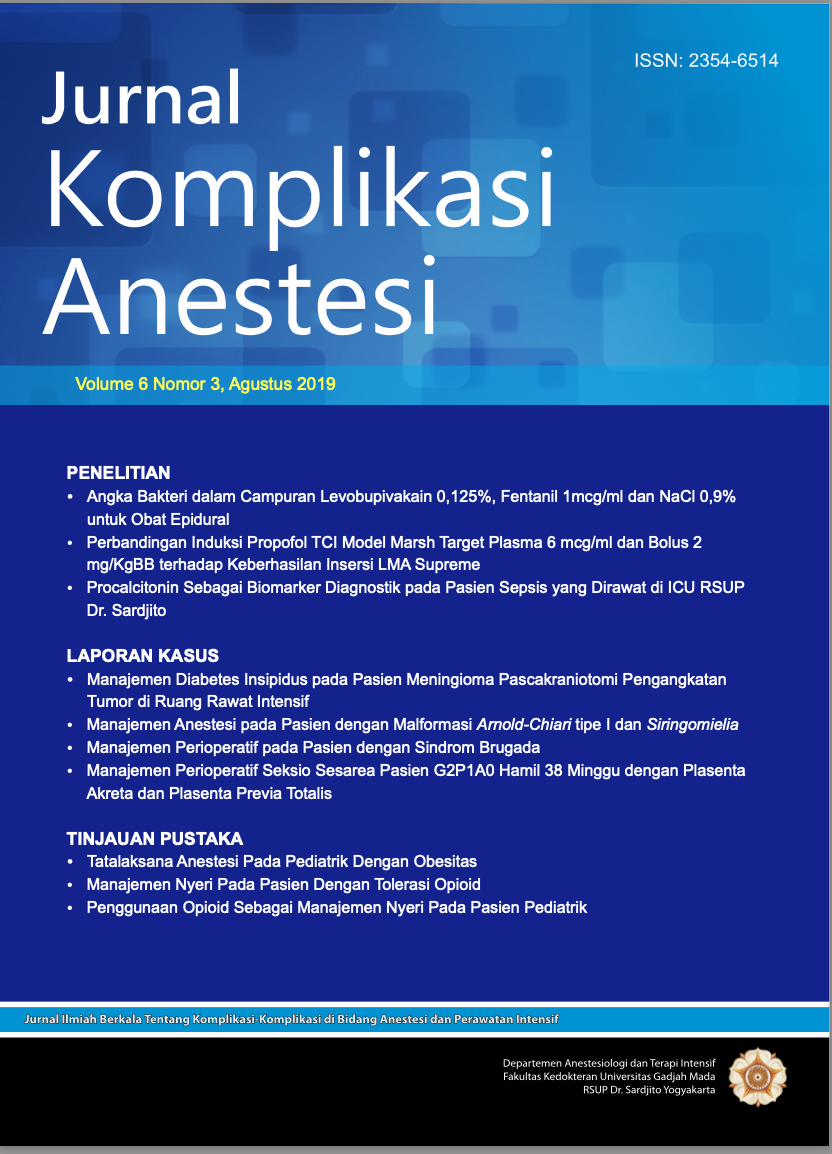Manajemen Nyeri pada Pasien dengan Toleransi Opioid
Abstrak
Jumlah pasien yang diresepkan opioid telah berkembang pesat selama dekade terakhir. Kasus nyeri kronis menjadi lebih banyak dan telah terjadi peningkatan penggunaan opioid untuk nyeri kanker maupun nonkanker. Akibatnya, proporsi pasien dengan toleransi opioid yang membutuhkan manajemen nyeri akut telah meningkat. Hal ini sering menghadapkan dokter dengan tantangan yang lebih besar daripada yang dihadapi saat merawat pasien respon opioid. Tujuan pengobatan opioid adalah menghilangkan nyeri akut dengan efektif, mencegah penarikan obat, memberikan bantuan masalah sosial, kejiwaan dan perilaku, dan memastikan kesinambungan perawatan jangka panjang. Pendekatan farmakologis menggabungkan kelanjutan dari pengobatan biasa, penggunaan jangka pendek, dan peresepan obat non-opioid dan ajuvan, untuk meningkatkan efek analgetik sekaligus menurunkan toleransi opioid dan hiperalgesia yang diinduksi opioid.

Copyright (c) 2019 Mahmud, Sudadi, Dika Rezkiawan Rezkiawan

This work is licensed under a Creative Commons Attribution-NonCommercial-ShareAlike 4.0 International License.
The Contributor and the company/institution agree that all copies of the Final Published
Version or any part thereof distributed or posted by them in print or electronic format as permitted herein will include the notice of copyright as stipulated in the Journal and a full citation to the Journal.
















